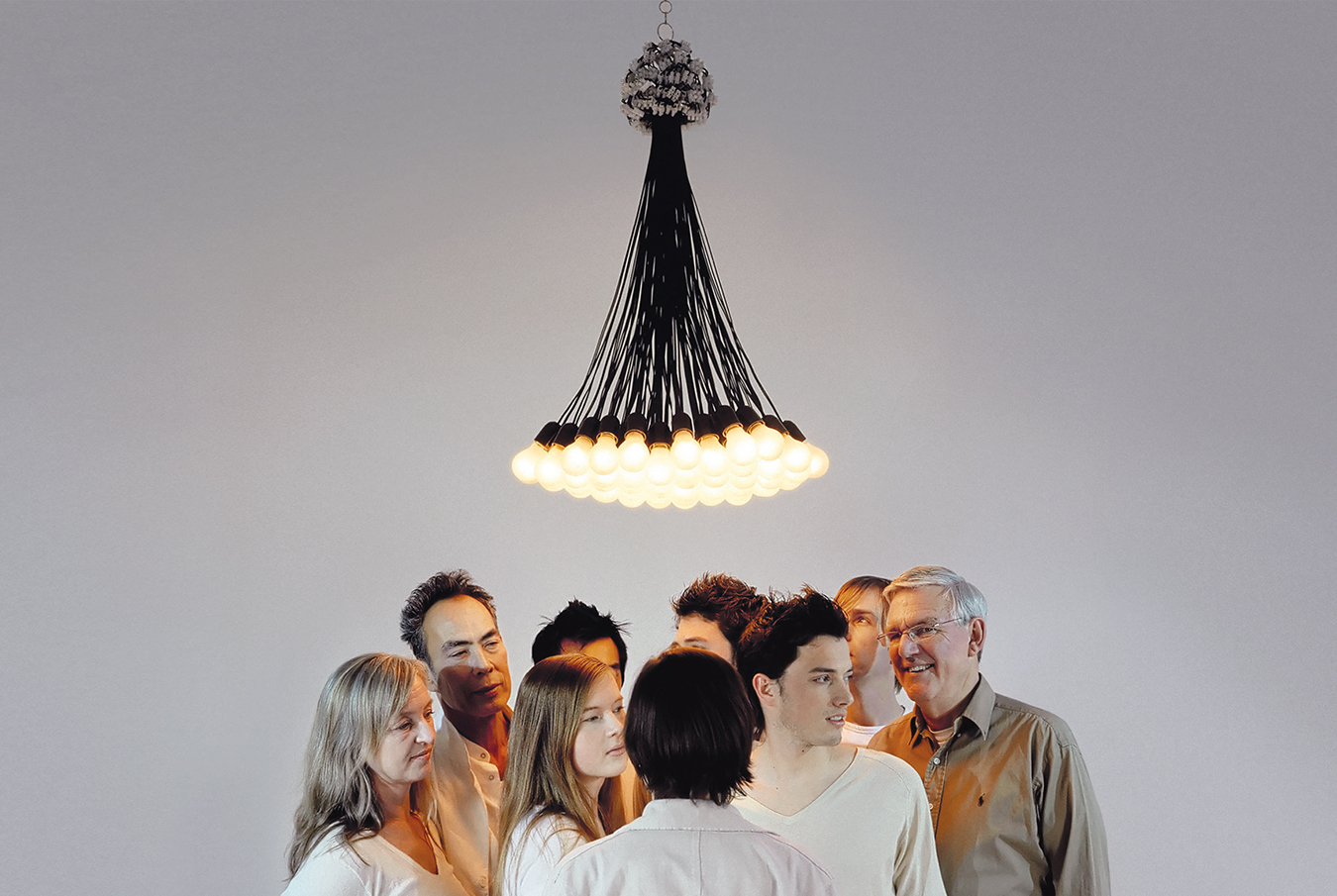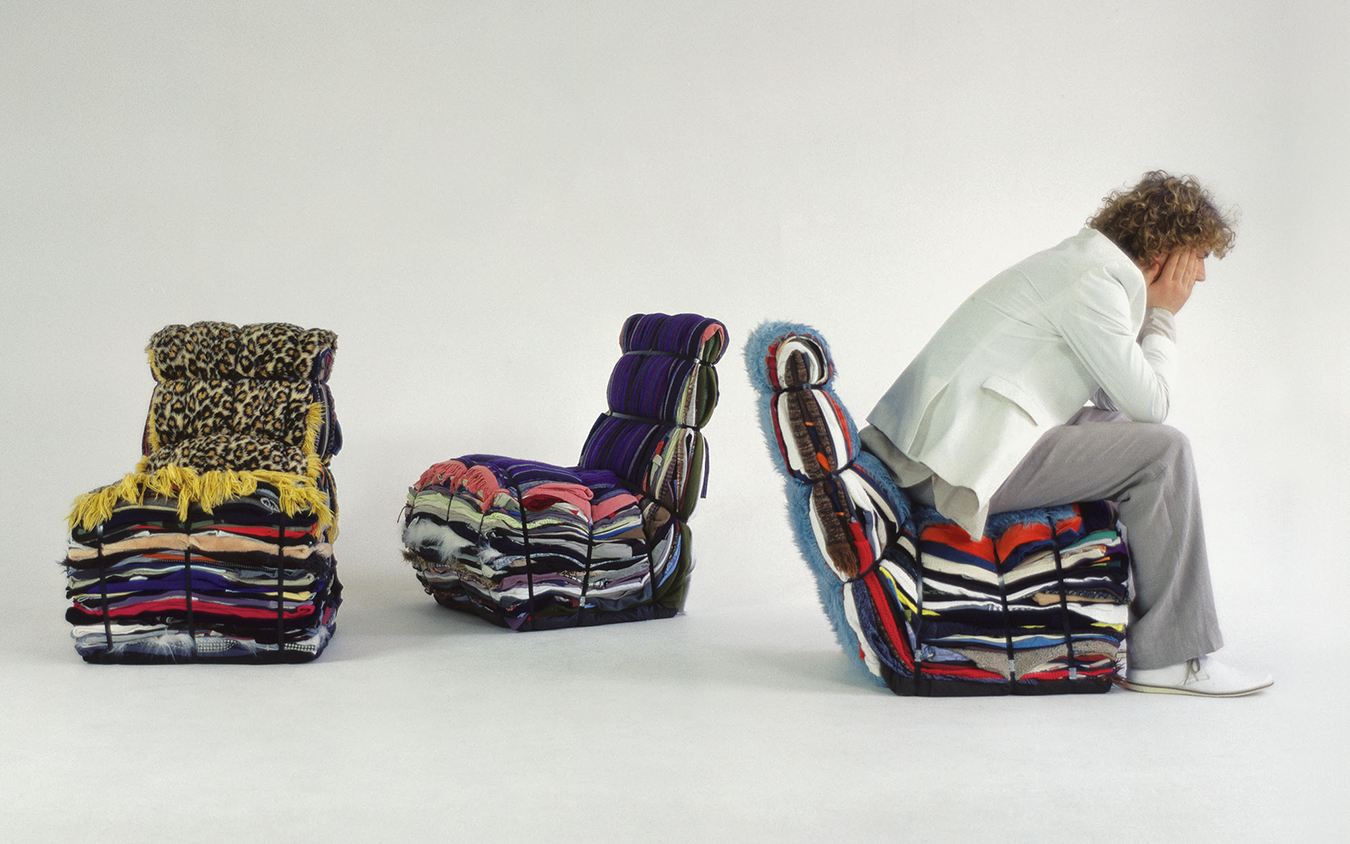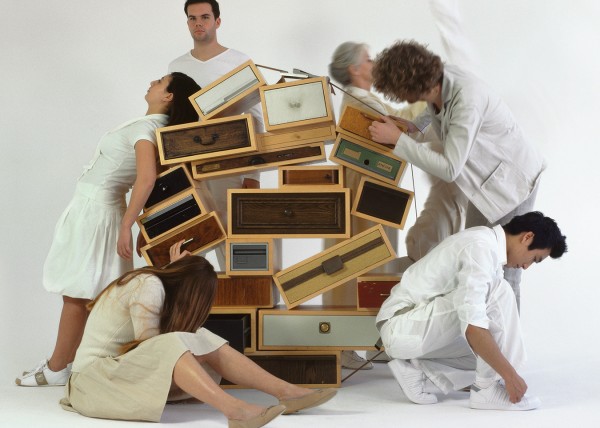-

85 Lamps, designed by Rody Graumans.
-

Rag Chair, designed by Tejo Remy.
-

Chest of Drawers, designed by Tejo Remy.
Droog Designs
Statement of content.

There are, en route to Staalstraat, more than a few coffee shops, myriad boutiques, galleries, and museums, and an assortment of happenings on the streets of Holland’s capital city. The bicycles are countless; the bridges, charming; the canals, labyrinthine; and the 17th-century canal homes with their neck gables, so uniquely Dutch. This is Amsterdam, the home of Dutch design.
Dutch design is known worldwide for blending innovation with a healthy dose of wit, subtle flair, and even irony. Fuelled by a steady stream of talent from the internationally renowned Gerrit Rietveld Academie, Amsterdam is a magnet for design alchemists. As heralded Dutch industrial and product designer Marcel Wanders insists in his book, Amsterdam Creative Capital, “Amsterdam is the creative capital because Amsterdam has the creative capital.”
A quiet design revolution occurred in the early 1990s when art historian and editor of Industrieel Ontwerpen magazine Renny Ramakers and jewellery and product designer Gijs Bakker formed what has become iconic in Dutch design: Droog. Contemporary design had for some time consisted of bright, colourful, over-decorated, and generally garish pieces. A return to the basics was needed, and Droog debuted in spring 1993 at the International Furniture Fair in Milan with a selection of 16 offbeat items by young Dutch designers—including Tejo Remy and Piet Hein Eek.
Droog (which rhymes with rogue) is Dutch for dry. “Dry means straightforward—what you see is what it is,” says Ramakers. “Basic, but never just basic—with a twist.” (The name also refers to a dry sense of humour.) Since launching on an unsuspecting public 16 years ago, Droog has subverted the sacred tenets of modern design by reassembling, rearranging, and repurposing everyday objects, while providing a smile for good measure. But behind the light-hearted irony of many Droog objects there’s a serious questioning of contemporary design, consumerism, and the role of the designer.

Located at 7b on charming Staalstraat is the 17th-century façade of Droog’s design studio-gallery-store hybrid. Passersby—both locals and tourists—frequently stop and peer in the windows of Droog and, more often than not, enter. “It’s very inviting, I think … Many people leave our store with a smile on their face,” says Ramakers. This is Droog’s flagship, or “Droog at Home” as it’s called. A steep, narrow staircase leads to the spartan yet colourful second and third level offices or the “think-tank”, as Ramakers describes it, “where we organize and produce.”
Droog is a lifestyle, a down-to-earth mentality that opposes the high-style and form-based world of design. A lot of design is style and image, but good design should tell a story. “Design has been developing in a way, well, everybody is doing the same—in general, very object-oriented. We want to have content,” explains Ramakers. With Droog products, “content is not only in the object … it’s about the systems, the processes, with whom I collaborate.” You know immediately what you are seeing when you look at a Droog design, and upon a second glance, you’ll likely notice a certain strangeness about it. “The designs that became famous, they always have some twist,” she says. “There is some kind of paradox in it. It doesn’t have to have that paradox, but it happens.”
Behind the light-hearted irony of many Droog objects is a serious questioning of contemporary design and consumerism.
The list of famous designs is varied—each with its own twist—and a few of the pieces unveiled in that first Droog exhibition include Tejo Remy’s Chest of Drawers, used wooden drawers stacked haphazardly and bundled with a thick cord; Rody Graumans’s 85 Lamps, which groups 85 light bulbs to make a chandelier; and Marcel Wanders’s Set Up Shades Lamp, a stack of basic lampshades in the structure of a lamp. Simplicity, Droog has proved, need not be boring.
The Droog design collective now comprises more than 100 designers and over 200 objects. There are wine-glass doorbells, soft polyurethane wash basins, a tablecloth decorated with the aftermath of a dinner party, and napkins with perforated folding lines that serve as both decoration and guide to create different arrangements. There’s even a red beaded necklace, Bound by Blood, which includes various prayer beads mixed together to create a contemporary blood-red jewel that, as the designer Katja Prins states, “refers to our mutual bond as well as the blood shed in the name of a religion.”
There is no specific formula that governs the selection criteria of the designers. “We select the designers related to our projects,” says Ramakers. Yet once selected, Droog has championed the careers of such designers as Marcel Wanders and Jurgen Bey. The designers are no longer solely Dutch, as “the moment international designers became also interesting for us … there [was] no reason to stick only to Dutch designers,” says Ramakers.
The Droog collective ranges from accessories to wearables, lighting, and furniture. Its home base is in Amsterdam, and there is a second store in Tokyo, and a 5,000-square-foot location opened this past May in New York. True to Droog ethos, all three stores offer a unique shopping experience. A Droog restaurant and hotel are in the development stages, to be adjacent to Droog at Home.
“Unconventional is conventional” is a popular Dutch adage, and it perfectly sums up the Droog spirit. “That’s what we want to explore—new ways of looking at design. It’s not only about objects, it’s about everything,” says Ramakers. “As long as you look, as long as you have a broad view on design, there’s always new. It could be the system, the process, everything. And then in the end, there will be new objects. We always start with content. What is the world? In what kind of world do we live?”
For the past 16 years, Droog has displayed an unfailing commitment to a new way of thinking about design. “We are what we are and we still are what we were,” declares Ramakers, who now runs Droog solo after co-founder Gijs Bakker resigned in June. “We’re not the same, because we’re older, but we have still the drive to be in front.” Droog continues to reinvent objects and forms, tirelessly challenging their functions and scrambling our perceptions.
Photos by Robaard/Theuwkens.




